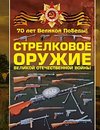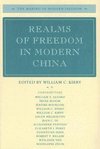
Transport in Warsaw
Source: Wikipedia. Pages: 34. Chapters: Railway stations in Warsaw, Streets in Warsaw, Warsaw Metro, Transportation in Warsaw, Warsaw Chopin Airport, Krakowskie Przedmiescie, Warszawska Kolej Dojazdowa, Szybka Kolej Miejska in Warsaw, Warsaw Tramway, Street... Viac o knihe
Produkt je dočasne nedostupný
14.61 €
bežná cena: 16.60 €
O knihe
Source: Wikipedia. Pages: 34. Chapters: Railway stations in Warsaw, Streets in Warsaw, Warsaw Metro, Transportation in Warsaw, Warsaw Chopin Airport, Krakowskie Przedmiescie, Warszawska Kolej Dojazdowa, Szybka Kolej Miejska in Warsaw, Warsaw Tramway, Street names of Warsaw, Koleje Mazowieckie, Warszawa Gdanska station, Trolleybuses in Warsaw, Warsaw Glówna, Nowy Swiat Street, Warsaw Centralna, Warsaw Wilenska, Warsaw Wschodnia Osobowa, Miodowa, Marszalkowska Street, Warsaw, Warsaw Railway Junction, Warsaw Sródmiescie, Aleje Jerozolimskie, Ujazdów Avenue, Royal Route, Warsaw, Warsaw Powisle, Warsaw Sródmiescie WKD station, Warsaw Cross-City Line, Warsaw Chopin Airport railway station, Zarzad Transportu Miejskiego, Zielna, Franciszkanska, Warszawa Ochota station, Wilcza, Tlomackie, Swietokrzyska Street, Warsaw, Sybirak Roundabout, Nalewki, Tamka street, Warsaw, Pulawska, Bonifraterska Street, Ulica Kubusia Puchatka, Yuri Gagarin Street, Warsaw, Smolna Street. Excerpt: Warsaw has seen major infrastructural changes over the past few years amidst increased foreign investment and economic growth. The city has a much improved infrastructure with new roads, flyovers, bridges, etc. Public transport in Warsaw is ubiquitous, serving the city with buses, tramways, and metro. Although many streets were widened, and new ones created, during rebuilding of Warsaw in 1950s, the city is currently plagued with traffic problems. The main reason is that in the Communist times, the traffic was small due to a low number of private cars - not only because of prices of cars, but also because of a special coupon, hard to obtain, which was necessary to buy a car. Thus, traffic engineers did not foresee that a number of cars would increase so drastically: in 2005, there was 800,000 cars in Warsaw. An additional problem was the lack of Metro and beltway. President Stefan Starzynski had planned both of them before World War II, but he had not enough time to realize the plans. Therefore, nowadays, a person who wants to get from one end of Warsaw to another, usually has to go through the centre. Moreover, there is a few parking places in the centre and permanent street works are being carried out during daytime. Today, there is one line of Metro in Warsaw and the building of the second one has been started, also a beltway is being built on the north of the city. Moreover, the city's government is planning to limit the car traffic in the centre (the elements of this policy are the "Park and ride" car parks and the zone of toll parking). Public transport in Warsaw is ubiquitous, serving the city with buses, tramways, and Metro. Freeways planned to serve as the city beltway are mostly in the design and construction phases.Warsaw lacks a good circular road system and most traffic goes directly through the city center. Currently two circular roads are under consideration. The first (called OEW, or Obwodnica Etapowa Warszawy) is planned to run approximately 10 kilo
- Vydavateľstvo: Books LLC, Reference Series
- Formát: Paperback
- Jazyk:
- ISBN: 9781156017548


 Anglický jazyk
Anglický jazyk 



 Ruský jazyk
Ruský jazyk 





